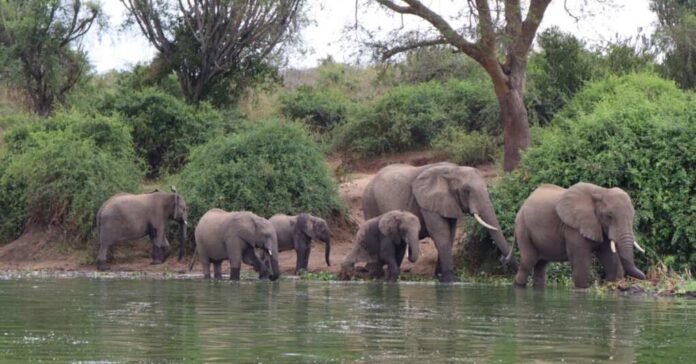
As southern Africa faces its worst drought in centuries, the small nation of Namibia has taken drastic measures to feed its starving populace: slaughtering hundreds of wild animals, including hippos, elephants, and antelopes, to put protein-rich meat on tables.
According to the United Nations, this desperate move comes amidst a “humanitarian crisis we’ve never spoken much of.” Over 80% of Namibia’s food stocks have evaporated due to the relentless drought, leaving almost half of its 2.5 million inhabitants staring down the barrel of severe hunger come July to September.
Namibia’s Environment Ministry asserts, “This exercise is necessary and is in line with our constitutional mandate where our natural resources are used for the benefit of Namibian citizens.”
Scientists pinpoint the root cause of this unprecedented drought to soaring regional temperatures, exacerbated by both El Niño phenomena and humanity-induced climate shifts. This deadly cocktail has parched lands reliant on rainfall-fed agricultural cycles, triggering successive state-declared emergency situations in Namibia, alongside neighboring nations such as Zimbabwe, Malawi, and Zambia.
Malnourished youngsters under age 5 bear the heaviest toll; many succumb to disease or starvation. Water scarcity heightens vulnerability among females fetching family supplies, exposing them to violent attacks en route. Moreover, outbreaks of preventable illnesses like cholera spread swiftly through affected zones.
Meanwhile, Namibia’s once-thriving ecosystems suffer mightily, too, with wildlife competing fiercely with locals for depleting aquifer sources. To mitigate this struggle and replenish national coffers via tourist revenue streams, professional marksmen aim to harvest approximately 720 beasts, comprising buffalo, zebra, and select species within protected parkland domains deemed sustainably abundant.
These efforts target particularly troublesome regions plagued by recurring clashes between roaming herds and rural residents seeking sustenance in diminishing habitats. Elephant populations especially continue to surge beyond manageable limits—according to local estimates—a trend mirrored throughout greater sub-Saharan Africa.
Neighboring states concur that unbridled elephant growth poses pressing threats to coexistence. As part of their solution suite, all participating regimes license controlled big-game hunts to thin herd ranks while generating vital capital. Critics argue these assertions exaggerate actual ecological pressure points.
Amidst mounting public disquiet regarding conservationist approaches, Namibian authorities recall failed attempts to liquidate excess pachyderms onto foreign markets—the ill-feted sale pitch in 2021 netted mere fractions of intended sales targets—and Botswanan head-of-state President Mokgweetsi Masisi’s provocative threat last year to relocate tens of thousands of his own surplus tuskers northward to Europe in response to proposed German import restrictions aimed at curbing ivory trafficking.
With international attention locked firmly upon the unfolding drama playing itself out beneath the blistering sun-kissed skies, questions abound whether pragmatic solutions can stave off calamity without sacrificing core values surrounding biodiversity preservation and responsible resource stewardship.
Only time shall tell if beleaguered Namibia finds reprieve in this radical gamble, trading lifeblood for breadbasket stability—or forever loses sight of balance between nature’s bounty and humanity’s bottomless needs.















